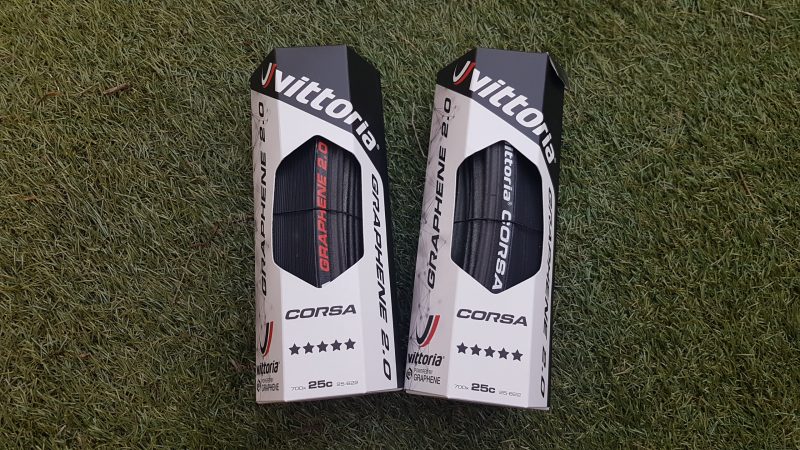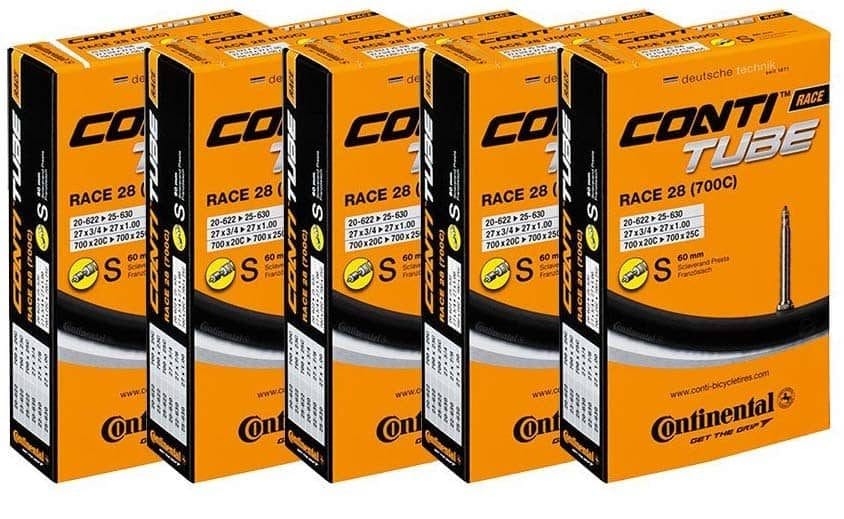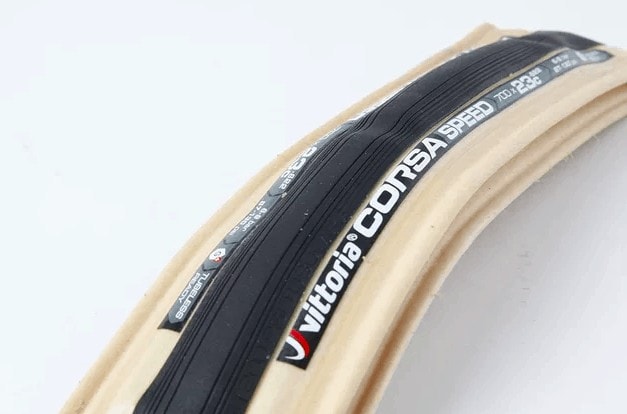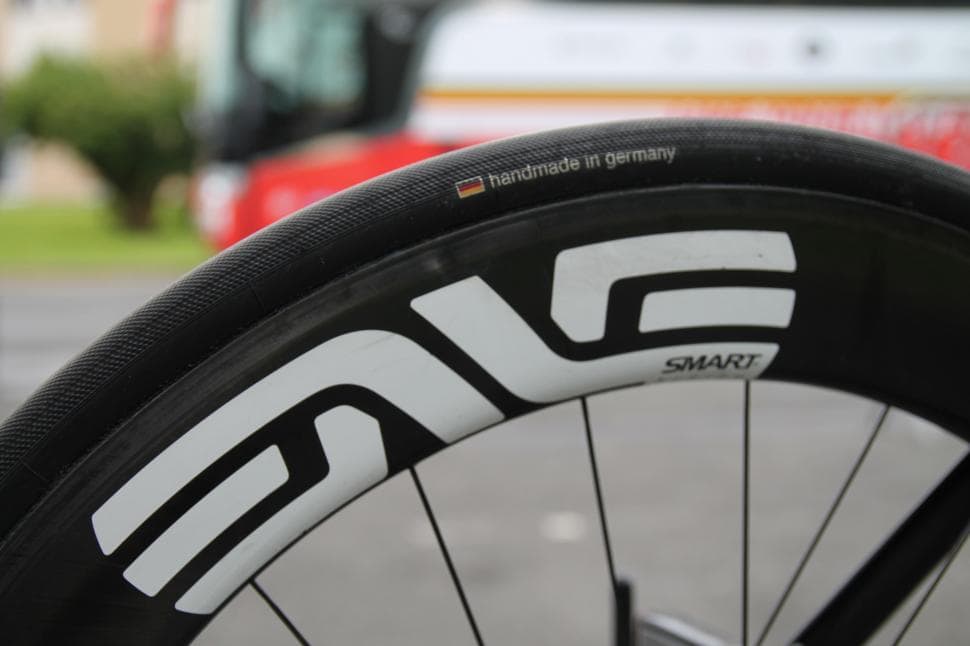Latex vs Butyl Tubes – What are the Differences?
Inner tubes, not the most exciting topic in cycling. Depending on how long you have been involved in the sport, you may not have even known there was a choice.
Butyl inner tubes are what most roadies know and use. They’re black and made from synthetic rubber.
Latex inner tubes are manufactured using natural rubber and come in a few pastel-like colors.
If you’re still running tubes or wondering if you should try latex tubes, this article will demystify the differences between the two, giving you the information you need to choose the best for you.
On This Page
Rolling Resistance
You may have heard this buzzword regarding modern, wide-rimmed wheelsets that are blowing up the cycling market. Rolling resistance is a value assigned to the amount of energy a tire loses through deformation as it rolls down the road. The patch of tire in contact with the ground is compressed while the rest retains its natural shape.
Rolling resistance, or CRR (Coefficient of Rolling Resistance), is an important metric to understand when selecting which tires you’re going to use (spoiler alert, and tubes), and for what application. Cyclists work harder, and expand more power, when rolling resistance is high. The inverse is also true, so cyclists want the lowest possible CRR to achieve the greatest amount of speed for the least energy investment.
If you love to crunch numbers and want to take a deep dive into tire rolling resistance, you may find your favorite tire here. Others have gone a step further by scientifically testing a wide variety of inner tubes to see how they affect a tire’s CRR.
Comparing results between the two means you can actually determine the rolling resistance of your favorite tire and tube set up. According to scientific research, latex inner tubes, and not butyl, are the way to go if you want the best rolling resistance possible.
But why is that?
Latex inner tubes are made from natural rubber, created with the sap excreted by a rubber tree. Rubber has a low modulus of elasticity, meaning it rebounds quickly and can handle a tremendous amount of deformation with less energy loss. Latex inner tubes can expand to over seven times their actual size.
Latex’s natural properties mean that when you pump up a latex tube, it fills every nook and cranny of free space inside your tire. And when you ride over potholes or irregular surfaces, it sponges up changes, rebounding efficiently and constantly as it takes the shape of the road.
Standard butyl tubes work fine, but its artificial rubber compound expands less, only 1.5 times its size, and doesn’t bounce back with the same performance as latex. As a result, a butyl tube loses more energy as it deforms, creating a higher rolling resistance.
Winner : Latex tubes has better rolling resistance due to its natural rubber properties.
Ride Feel
Devotees to latex tubes say the ride is not only faster, but smoother. Because the latex completely fills any free space inside the tire, cyclists often equate ride feel to that of sew ups (tubulars). Most cyclists may not relate to this comparison, but the message is only positive.
I asked a friend to describe his experience with latex inner tubes and his reply was that it Made his bike sing. He spoke with particular enthusiasm when combining latex tubes with his favorite high-end racing tires.
The moral of the story?
If you’re going to invest in latex inner tubes, use them with high-end racing and performance tires for the best ride feel and results.
Winner : Latex tubes for a smoother ride feel.
Weight
A standard butyl tube weighs about 110g. And latex, a mere 54g, or roughly half its weight.
Easy math means a rider would save about 100g simply by switching to latex inner tubes. Lighter butyl tubes exist, but their weight savings come at the cost of a thinner sidewall, making them more fragile and susceptible to punctures.
Weight weenies everywhere rejoice at this easy 100g savings. Trying to shave precious grams is an obsession for some, and an expensive one too.
So instead of buying spendy titanium bolts, carbon components, and saddles, you’d be better served by getting some latex inner tubes.
Winner : Latex tubes weighs on average half of butyl tubes.
Installation And Maintenance
Take care when installing latex inner tubes.
Natural latex is more susceptible to twists and kinks, which are a big no-no during installation, than butyl tubes. Verify that the tube isn’t pinched, tangled or otherwise caught between the rim and tire bead before inflating.
A great tip I learned was to place a fair quantity of talcum powder inside the tire and turn it around 360° so the powder is distributed throughout its interior. The powder coating goes a long way in facilitating installation, preventing pinch flats and reducing friction between the tire and tube.
Inflate slowly and between every few pumps, inspect that the tire bead-rim gap is clear of any tube by gently pinching around the tire’s circumference. At a certain point, you’ll know the tube is free from risk and can pump freely. This is also good practice when installing butyl tubes, so use it liberally!
Latex is porous meaning it loses pressure faster and will require more regular filling. If you’ve got a big race or ride coming up, don’t pump up the night before and be done with it.
Take a few extra moments to top up the morning of; you won’t regret it.
Winner : Butyl tubes are easier to install and maintain.
Durability
Standard butyl tubes hold air longer, are more durable (except extra-light ones) and can be freely patched and repaired. If you’re still running caliper brakes, butyl is the way to go as it’s less sensitive to temperature changes that can arise with heat build up with rim brakes.
Either material works on a disc-brake bicycle that runs tubes since heat accumulates on the disc, and not the rim.
Latex tubes are not repairable, deteriorate over time, and are more susceptible to damage if exposed to extreme temperatures, harsh chemicals (WD40) and UV rays over an extended period.
Winner : Butyl tubes are more durable and can be patched.
Cost And Availability
The sap from a rubber tree doesn’t flow fast or in significant quantities, so it takes more time to make a latex tube. More manufacturing time and a limited resource equals a higher price tag.
You can pick up a latex inner tube for between $15 to 18, which is about double the price of a butyl tube.
Some shops don’t stock latex tubes due to their higher cost. Latex is a niche market, so the choices will be more limited. Quality brands like Vittoria, Silca, and Michelin with a deep tradition in racing, still make them.
Buying at your local shop helps keep their doors open, but you may find significant savings by purchasing your latex tubes online.
Winner : Butyl tubes cost on average half of latex tubes.
Watt Savings
The marketing behind a Vittoria branded latex tube claims a saving of 5 watts, per tire as compared to a butyl tube. It may not sound like much, but a bicycle has two tires.
If you calculate 10 watts gained over the total ride length, you get some interesting and significant figures in terms of power savings.
The latex power savings claim is supported by scientific results, so if you’re looking to improve your performance, instead of spending money on expensive upgrades like ceramic bearings, and oversized jockey wheels, you’ll save more watts and money by installing latex inner tubes to use with your high-end performance tires.
Winner : Latex tubes roll smoother than saves you a few watts.
So, what will be your inner tube of choice?
Butyl or latex?
Author Recommended Reads




